Lightly sweet, mostly dry, and bursting with bubbles, a naturally fermented lemonadeis perfect on a hot summer day. While its flavor is reminiscent of the classic drink, this version has an added benefit: it's loaded with live cultures and is a great source of probiotics.
Jump to Recipe | What is it? | Key Ingredients | Tips | Variations | Questions
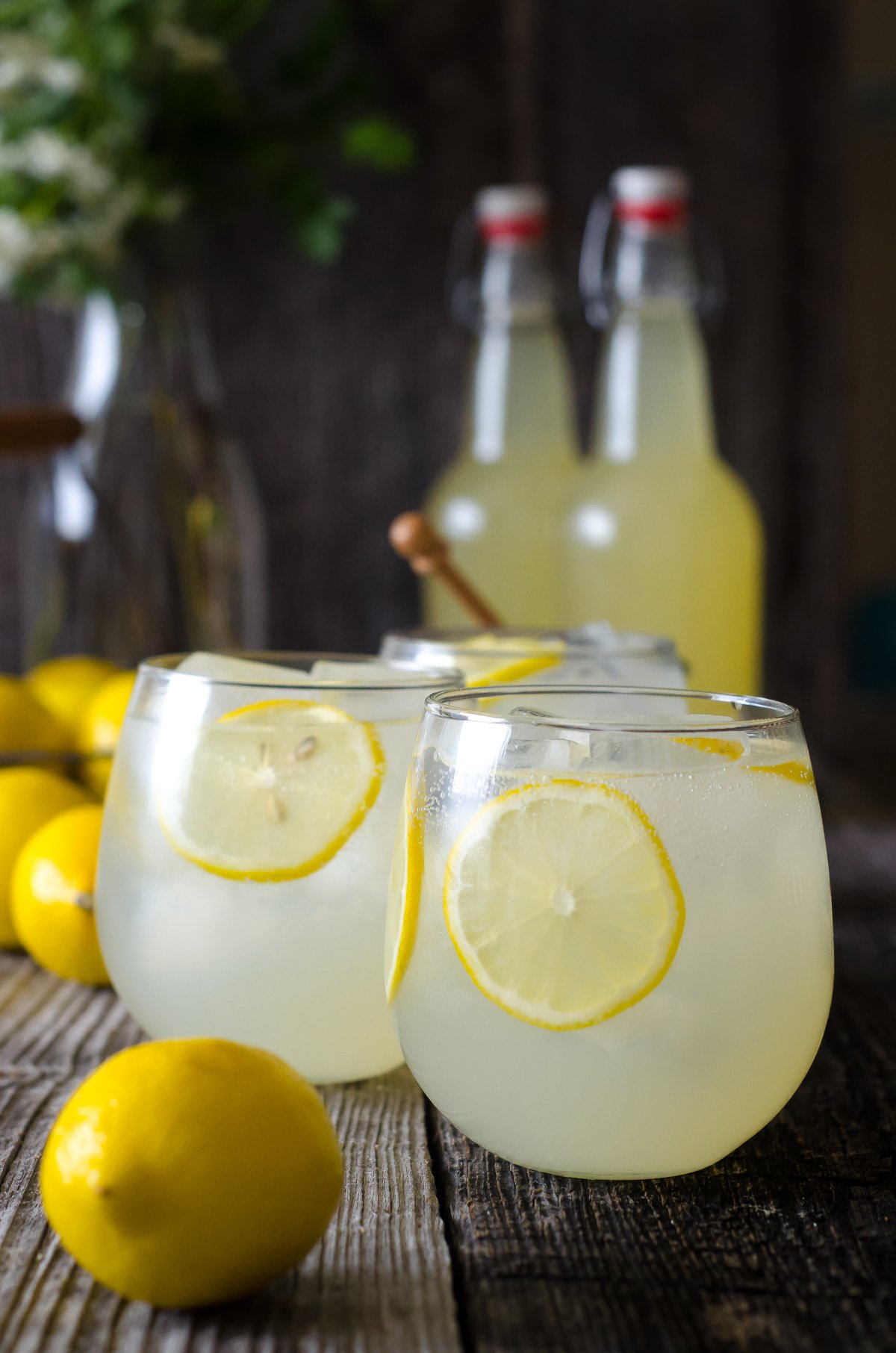
What is fermented lemonade?
Fermented lemonade is a fermented drink similar to water kefir and jun kombucha. Its flavor is reminiscent of old-fashioned lemonade, with a bubbly effervescence achieved through fermentation.
It's similar to the Finnish drink sima, which is made by fermenting lemon juice, honey, and yeast.
This pleasant, fizzy drink is easy to make and a great alternative to syrupy sweet sodas because it comes with a good dose of friendly bacteria that help bolster the immune system and support gut health.
Why This Recipe Works
Unlike many fermented drinks, which have a vinegar-like sourness, the flavor of this lemonade is lightly tart with a pleasant, subtle sweetness.
It's easy to make. You mix, bottle, and ferment. That's it.
There's no high-fructose corn syrup like most store-bought lemonade. Instead, it's naturally sweetened with a little honey.
It's an excellent alternative to mainstream sodas since it's a naturally probiotic beverage that may help support a healthy gut microbiome.
The fermentation process reduces the amount of sugar in this drink as the good bacteria metabolize the sugar and then produce B vitamins and beneficial acids.
Key Ingredients
The key to making any homemade fermented soda, including this probiotic lemonade, is a combination of flavorings, sweeteners, and starter culture.
A sweetener, such as honey, helps to flavor the drink while also feeding the beneficial bacteria responsible for fermentation. A starter culture helps kickstart fermentation, ensuring a healthy and reliable brew.
- Fresh lemons give the drink its flavor and a pleasant acidity. Meyer lemons work particularly well, thanks to their sweet, floral notes. You can also use limes and other citrus fruit, too.
- Honey lends a little sweetness to the drink. It also provides food for the beneficial bacteria in your starter that will transform the lemonade into a probiotic, fizzy drink.
- Water provides the bulk of the liquid in the drink. When making fermented drinks, it's best to use filtered water. Chlorinated water may negatively impact the bacteria necessary for effective fermentation.
- A starter culture kickstarts fermentation. You can use just about any starter, including water kefir, ginger bug, wild yeast, kombucha, or fresh, liquid whey from homemade yogurt.
Equipment
Effective fermentation depends on the right equipment. When making homemade fermented lemonade, picking up a set of flip-top bottles is a good idea. Additionally, many people prefer repurposing used plastic soda bottles for their fermented drinks.
Recipe Tips
In addition to following the recipe step-by-step, following these tips can help ensure that your lemonade ferments safely and turns out exactly how you want it.
- Temperature affects fermentation. Your lemonade will ferment faster in a hot kitchen and slower in a cool one. Slightly warm room temperature (about 72 to 75 F) is optimal.
- Brew away from direct sunlight and in an area with an even ambient temperature that is free from drafts.
- Timing is important, so keep notes on your calendar to remind you to transfer your bottles to the fridge so that they won't ferment for too long.
- Strain the ginger bug through a fine mesh strainer before mixing it with the other ingredients. If you're using an alternative starter, such as yogurt whey or kombucha, you won't need to strain it.
- Adding a raisin to your bottles of lemonade is a good indicator that the lemonade is ready. The raisin will absorb the carbon dioxide released by the bacteria, plump up, and float when the brew is ready.
Love this recipe? There's more.
Join Nourished Kitchen's Cooking Club for ad-free browsing, nourishing monthly meal plans, and access to all our premium downloads.
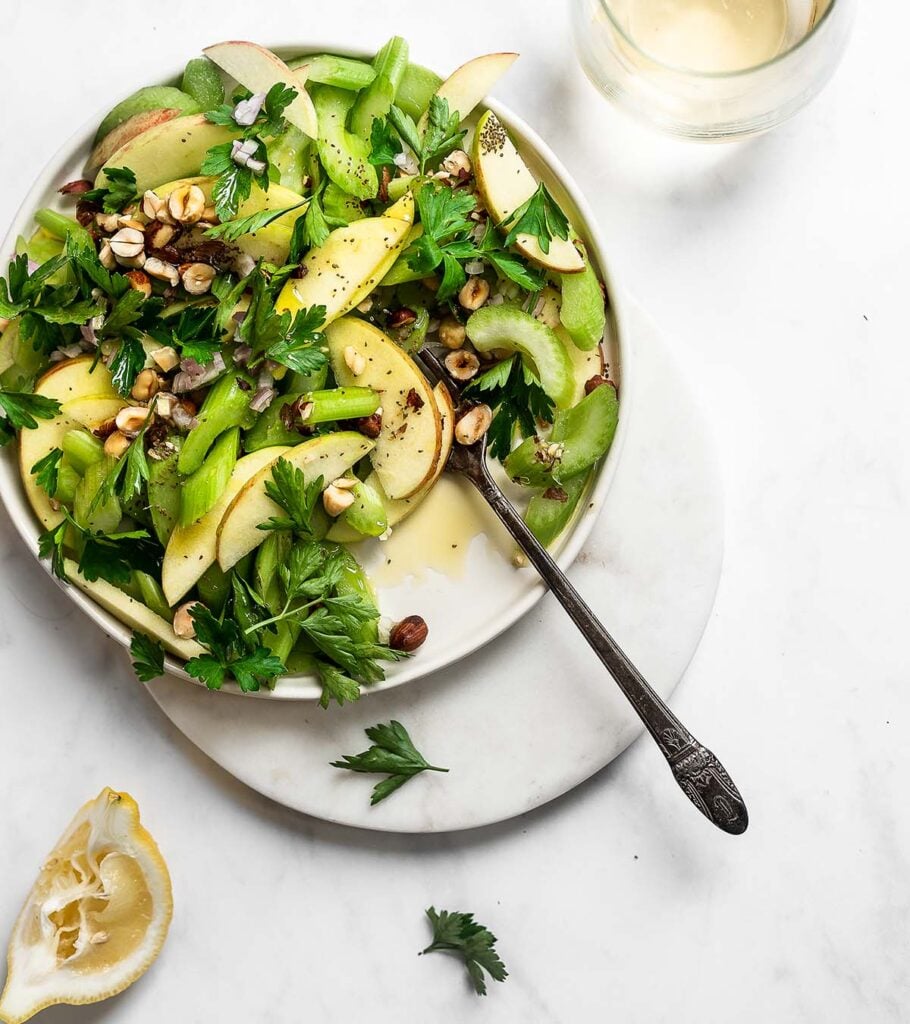
Variations + Substitutions
Try lime instead of lemon for a pleasant alternative. Lime offers a beautiful tart punch of flavor and a delicate floral note. It also works equally well as lemon in this recipe.
If you're looking for an alternative sweetener, brown sugar, organic cane sugar, and maple syrup will work. You just need to use a caloric sweetener so that the beneficial bacteria in the starter have fuel for fermentation.
Add some spices or herbs to the brew. The best way to do this is to make an herbal infusion. Bring the water (and whichever spices or herbs you like) to a boil, and then let it cool to 90 F. Then strain the infusion and use it as the water portion of your lemonade. Rosemary and mint are delicious additions.
Other summery drinks you'll love
Recipe Questions
How long does it keep?
Store the bottles in the fridge and enjoy the lemonade within about a month.
Can I use stevia, erythritol, or another non-caloric sweetener?
No. The honey in this recipe not only makes the lemonade taste sweet. It also helps feed the bacteria and wild yeast that ferment the lemonade.
For an alternative fermented drink that doesn't require sugar, consider beet kvass.
What type of starter culture should I use?
I find that this recipe works best with ginger bug or wild yeast, both of which should be strained before using.
It is also acceptable to use another fermented drink as your starter, such as kombucha, water kefir, or even fruit kvass or tepache. They work because they are all a source of beneficial bacteria and yeast. You can use an equal amount (½ cup).
Fresh whey from yogurt or kefir is also acceptable as a starter culture for fermented sodas like this lemon soda. You may need to use a full cup of whey, to get the same effect as ginger bug, and it must be very fresh.
Whey from cheesemaking is largely ineffective, and whey protein powders will not work as they are highly processed and not a good source of the natural bacteria needed to kickstart effective fermentation.
What about primary and secondary fermentation?
Many brewers follow a 2-step process for making fermented drinks such as kombucha and water kefir. For kombucha and water kefir, the 2-step process is necessary to preserve the kombucha SCOBY and water kefir grains, which cannot be placed in sealed bottles.
Since you're using a starter culture rather than a SCOBY, 2-step fermentation isn't strictly necessary, although it can increase the clarity of the final product.
If you wish to use the 2-step process to make fermented lemonade, pour all the ingredients into a half-gallon jar equipped with an airlock. You can also place additional ingredients such as herbs, spices, or fruit into the jar at this time.
After a few days, you'll strain the lemonade and then transfer it to individual bottles. Then, you allow them to ferment a second time.
Unlike primary fermentation, in which you allow carbon dioxide to escape, you'll seal the bottles to capture the carbon dioxide. As a result, your lemonade should be fizzy and effervescent. Finally, you'll transfer the bottles to the fridge for a few days, which allows the carbonation to set.
My lemonade never became fizzy. What went wrong?
A dead starter and a poor seal are the two most likely culprits. Weak starters may not have enough live cultures to ferment your lemonade. Additionally, a poor seal or an unsealed jar will allow carbon dioxide to escape, resulting in a lemonade without fizz,
Some bottles were fizzy, but others weren't. What went wrong?
If you have some bottles of fizzy lemonade but other bottles are flat, then you need to mix the ingredients more thoroughly next time. All the ingredients need to be evenly distributed among the bottles for consistent results.
It's too sweet (or not sweet enough).
If your probiotic lemonade is too sweet, consider cutting down the honey to about 2 to 3 tablespoons. This is just enough to support fermentation. You can also ferment the lemonade longer, but it may increase the alcohol content.
If it's not sweet enough, you can increase the honey to 1 ¼ cups or ferment it for a shorter period of time. A shorter fermentation period may result in less fizz.
Why is there sediment at the bottom of my bottles?
Sediment on the bottom of the bottle is old yeast, and you can ignore it. There's nothing wrong with it, but it's not particularly pleasant to drink, either. You may also find that you prefer a 2-step fermentation process, which results in less sediment in your bottles and greater clarity in your brews.
Why is there film or foam on the top of my bottles?
Sometimes you'll see a creamy white film developing on the top of your bottles. If you have used whey as your starter, this film is likely from excess milk solids.
If you used kombucha or water kefir as a starter, it is likely a small pellicle or SCOBY forming, and it is a good sign that you've let your lemonade ferment too long.

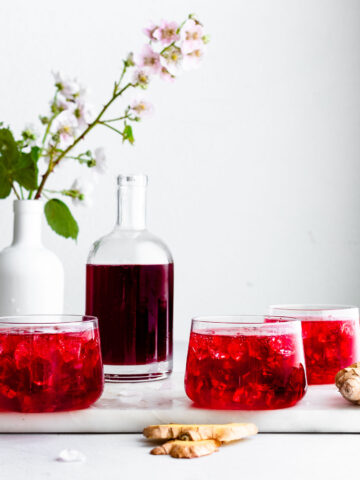
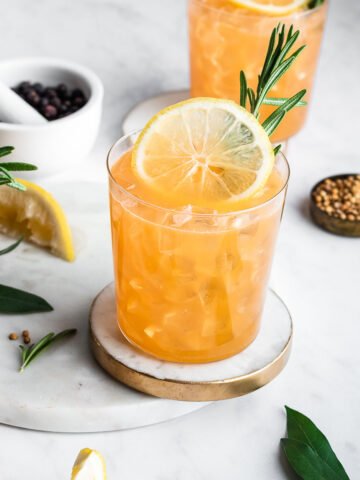
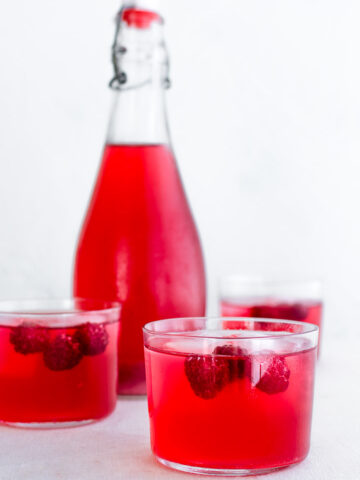

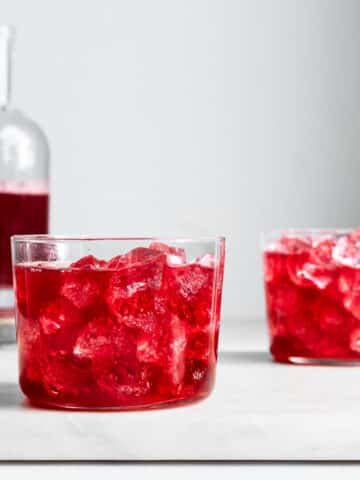
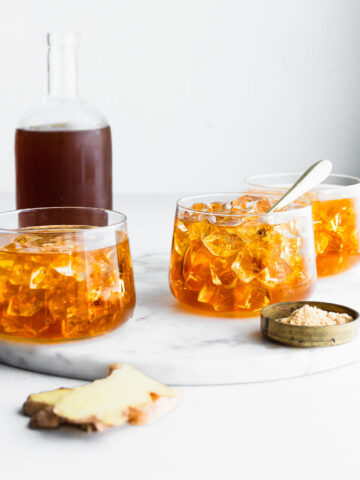
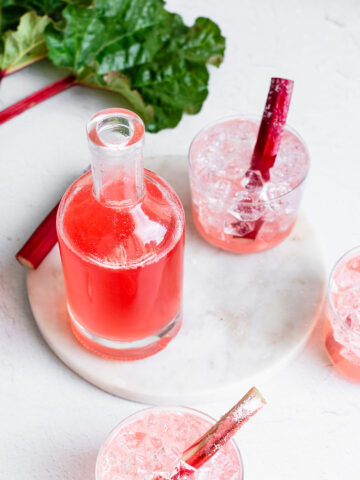
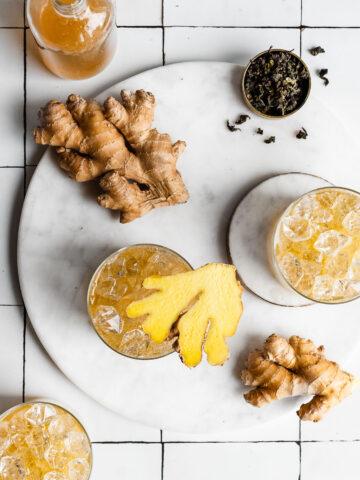
Gina says
My bottles didn’t become fizzy nor the raisin float. It’s been over a week. The seals look fine and there’s no socby. What should I do? It’s been a little cold and there’s an overhead counter light above them sometimes, but should I referment them or are they safe to drink now?
Jenny McGruther says
If, after a week, there's no activity, I would dump it and start over. Warmth is important for short ferments. I'd chalk the problem up to a cold kitchen.
Carole says
Just tried this today after fermenting for 6 days. Wonderful! This is a keeper.
Thank you.
Anita says
I made this using whey from making farmers cheese and subbed the honey for molasses. It was delicious!!
Susan O'Connor says
I used a ginger bug... totally delicious. Have also used half lemon half lime. I can't make enough of this. Sometimes I use 1/4 glass of the final ferment and top it up with sparkling mineral water.
Autumn says
Ours turned out super fizzy. I'm wondering if I can use lime next time instead of only lemon, though.
Danielle Davis says
I am so excitied to try this! Although I haven't yet, I will, 5 Stars for the excellently written forward. I make yogurt weekly, I had one quick question. When I made my yogurt, I do add a little sugar since it is made for the kiddos, will this affect the whey? Thank you!
J.P. says
I love this! I have whey from making Greek yogurt and was looking for a great way to use it. It's so crazy. I started making saurkraut and now I am in this wild fermentation rabbit hole 🙂
I am going to sub in pure cane sugar for the honey...because my honey is pretty pricey (from local hives). That should work ok, right?
Tami says
I have a question - I had four bottles - one of them is fizzy after 5 days, but the others are not. That bottle was only 1/2 full. Do I need to give the others a bit more time then?
And should I shake the bottles every so often?
P.S
I added Lavender to mine and drank the 1/2 bottle with my lunch - it was perfectly fizzy and delicious!
Elaine garner says
It may be more efficient real brewery bottles are better for this ! We use beer bottles from our local -hubby gets the beer I use the flip top bottles over and over -with great success -no exploding as yet lol
Hope that helps!
S Gayle Stevens says
The best ever
Tiffany Cale says
I made this with lemons from the farmers market and it was fabulous. Planning to make it again. Thank you so much for the recipe. Great way to get probiotics into my children.
Elizabeth says
Can I substitute Raw Apple Cider Vinegar for whey since I don't want to purchase the yogurt or have any of the other things listed.
Ariane says
So I hesitantly tried this, because I’d love to start fermenting but it scares me. My lemonade sat out 4 days and at the bottom this white cloudy stuff formed. Now I shook it up, smelled and tasted it. It smells hintishly like beer and tasted fine, it actually tasted good! Does this mean it’s ok? Or is the white wispy stuff a bad sign.
Stefan says
the white stuff is just from the fermentation process. No big deal
Sarah says
This is so cool! I never knew how to ferment lemonade before. I don't know how to make kombucha or have the starter for it, but I make yogurt all the time and can get whey easily! Very excited to try this!
Tiffany says
LOVE this recipe! We made this last week and we are making it again. Awesome way to get those probiotics in and the kids love it!
Talia says
Hi Jenny,
Love your website and really love this recipe. My fiance enjoyed it so much, that he had three glasses of it (mixed with lots of ice)!! I am now trying the recipe with limes to see if it will make a nice limeade.
Best
Alison says
Liked this one. Made according to recipe. But it was a little too much sugar for my liking (I stopped fermenting it when the top of the gallon ball jar I was using looked like it was going to pop off.) I suppose I could have fermented it longer, but I think I may experiment with a slightly less juice/honey to water ratio next time. But very tasty all the same. Thanks!
Katy says
Mine is beautiful and fizzy and gets a foamy head like Boddington's (ale?). It's delicious! I had it on the counter for weeks and only opened it today for fear of an explosion. : )
All was well! Thanks for sharing this very nifty recipe.
Julia Mueller says
I LOVE lactofermented lemonade! I love how creamy and flavorful it is - and so full of health benefits! I've never made it using honey, so this post is quite the inspiration to get brewing. 😀
Lily says
Do you have to use a fresh starter for every batch? Is it not like kombucha where you save some of the finished product from the first fermentation to make the next batch?
Jenny McGruther says
Yes, you need to use a fresh starter each time. This could be fermented lemonade from the previous batch to start the next batch.